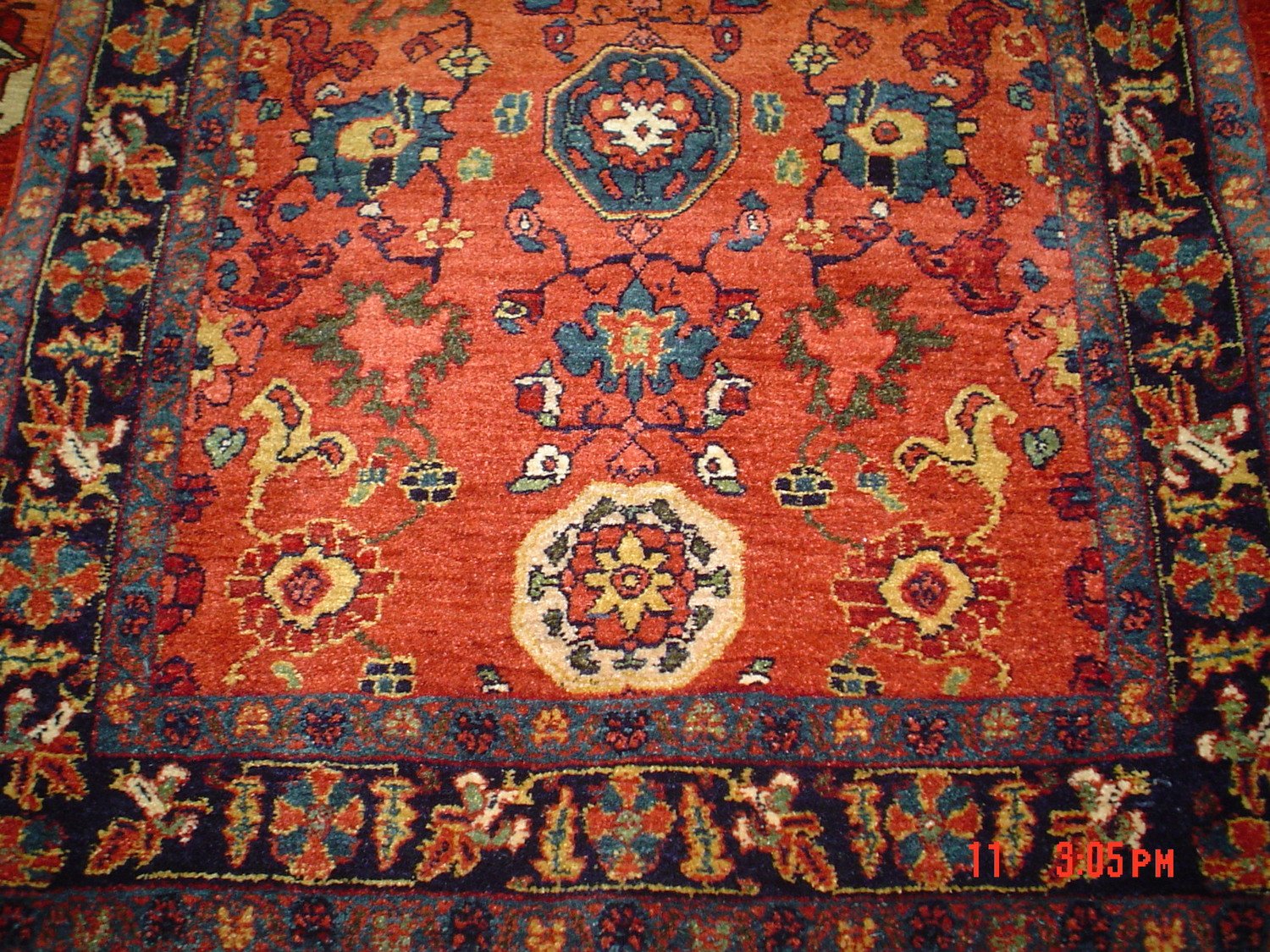What I Have Learned About Oriental Rugs
By Penny Krieger ©2015-2024
In 1990, I knew virtually nothing about hand-woven rugs. Fast forward to 2019, I have been a retailer with an Oriental rug gallery for over 20 years. I started late but dove into this business with much enthusiasm. I now own more books on Oriental rugs than anyone I have ever met and will continue to expand my library on the subject at every available opportunity. Do I read them all cover to cover? No, I look up exactly what I need to know and move on.
There are many different types of rugs being woven in numerous countries as I type. Handmade rugs are produced in Iran, Afghanistan, Pakistan, Egypt, India, China, Romania, the Caucasus, Turkey, and other places. There are so many different types it can be intimidating. Every dealer, every Oriental rug store finds their niche. Mine is tribal rugs from Iran and Afghanistan. Turkoman or as the Afghans say, Turkman rugs have always talked to me. My first purchase years ago was a beautiful old red Afghan Turkoman. I have also found the newer production in Afghanistan to be more than pleasing. Many of these designs, currently being produced are taken from antique Persian rugs. What is fascinating with some of the newer oriental rugs being created are the colors used, which are more harmonious and occasionally very different than the traditional reds and blues. Soft light greens of many flavors have been popular. Warm gold with small increments of crimson red, navy rugs with highlights of forest green, and so forth. Unusual colors skillfully worked into an enchanting drawing sometimes can be nothing less than spectacular! It takes vision and talent to create these beautiful works of art with many individuals working together.
One would have to spend astronomical amounts of money to find such an antique rug in excellent condition, good enough condition to be used as a floor covering and not just a wall display. These types of rugs are what are currently being offered in some of the better rug stores and galleries. As these pieces generally cost more to produce, higher grade wool, genuine vegetable dyes, using no child labor, a merchant would have to have quality and fairness as priorities when purchasing inventory.
I have also learned that no two rugs are alike. Same design, same wool quality, the two supposedly similar rugs are NOT similar at all. I have seen this so many times, especially when the rugs are woven in the home of the weavers or small village cooperatives. The first one arrives. It is beyond gorgeous. It sells quickly and I am keen to get another piece with the same wonderful look and charisma as the first. Well, the second rug arrives and the "Wow" factor is somehow missing. The colors and design layout are close but somehow the rug is flat.
The bottom line is, when a rug has it, it has it. It's called the "Wow factor". It knocks your socks off and you cannot lose your gaze. A good rug COMMANDS your attention and continues to do so endlessly. Programmed rugs, being defined as rugs that are made in workshops from graphed designs in all sizes with machine-spun wool duplicated over and over may be pretty and acceptable for some but to my eye, they are boring. If you want perfect, buy a machine woven rug. It will cost you less and you will never find an irregularity or thread out of place. If you are seeking woven art, then buy an original handwoven rug that is unique, distinctive, woven with heart using hand-spun wool and good dyes (plant-based). Flatweave, pile weave, makes no difference. This is why I love saddlebags and all tribal ethnographic pieces classified as Oriental rug trappings. Storage bags, grain sacks, spindle bags, each piece was woven for use and more often than not I have found them to have heart.
Does this mean the rug has to be an antique? No, it means that the rug has to communicate to the person looking at it. Many tribal rugs have design elements that are woven from memory. They are never perfect and the odd whimsical figure here and there only adds to their charm. Sometimes an intentional mistake can be found. Always enchanting and always done on purpose. Sometimes imperfection can be glorious!
One of the best websites I have found with abundant information on how weavers create rugs and the techniques used is Marla Mallet's site. When I first entered the rug business years ago, I purchased her book and as a weaver herself she is highly enlightened on this subject. It probably seems unusual for one rug merchant to recommend another's site but if you are seeking knowledge and understanding, less is not more. She also specializes in kilims and flatweaves, which I do not. I have a few here and there but my emphasis is on hand-knotted pile rugs with a strong emphasis on tribal rugs from Iran and Afghanistan.
Hopefully, this information will be of some use. If and when you become interested in purchasing a beautiful Oriental rug with heart, please have a look at the rugs I offer. I will never sell you a rug unless you absolutely love it. Promise!
Penny Krieger, owner
Penny Krieger is the owner of Paradise Oriental Rugs, Inc., located in Walla Walla, WA. Her gallery specializes in tribal rugs and carpets woven with hand-spun wool and plant-based dyes with a strong emphasis on Persian rugs and tribal designs woven in Afghanistan. She is now selling rugs on an appointment basis. For more info please have a look at her website: https://www.paradiseorientalrugs.com Phone: 707-823-3355

